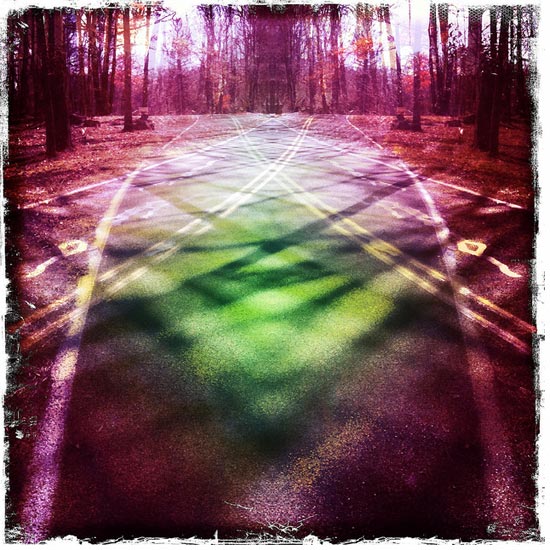A couple of weekends back I was checking out Chuck Wendig’s blog terrible minds. I was blown away — and I know Chuck already. He’s the co-writer on Lance Weiler’s “H.i.M. (Hope is Missing)” that I am producing. That said, the humor, wisdom, and outright generosity of his posts were even more than I had anticipated.
Today, I am pleased to repost that post that got me so excited. I don’t always agree with Chuck (or maybe I do), but I know I love what he shares. Besides, disagreements are what drive us all to find solutions. So get into it. It’s so good I had to say it again.
1. Stories Have Power
Outside the air we breathe and the blood in our bodies, the one thing that connects us modern humans today with the shamans and emperors and serfs and alien astronauts of our past is a heritage — a lineage — of stories. Stories move the world at the same time they explain our place in it. They help us understand ourselves and those near to us. Never treat a story as a shallow, wan little thing. A good story is as powerful as the bullet fired from an assassin’s gun.
2. Effect Above Entertainment
We love to be entertained. Bread and circuses! Clowns and monkeys! Decapitations and ice cream! A good story entertains but a great story knows that it has in its arsenal the ability to do so much more. The best stories make us feel something. They fuck with our emotions. They make us give a flying fuck about characters and places and concepts that don’t exist and won’t ever exist. The way a story stabs us with sadness, harangues us with happiness, runs us through the gauntlet of rage and jealousy and denial and underoo-shellacking lust and fear (together, lust and fear may stir a “scaredy-boner”) is parallel to none. Anybody can entertain. A juggler entertains. A storyteller makes us feel something. Makes us give a shit when we have no good reason to do so. Fun is not the last stop on the story train. The storyteller is master manipulator. The storyteller is cackling puppetmaster.
3. A Good Story Is A Good Story Regardless Of Genre Or Form
Segmentation. Checking off little boxes. Putting stories in the appropriate story slots and narrative cubby-holes. Is it a sci-fi TV show? A fantasy novel? A superhero comic? A video game about duck hunting? An ARG about the unicorn sex trade? We like to think that the walls we throw up matter. But they’re practically insubstantial, and once you get them in your mouth they’re like cotton candy, melting away to a meaningless slurry. Good story is good story. Those who cleave to genre and form — whether as teller or as audience — limit the truth and joy the tale can present. Cast wide and find great stories everywhere.
4. That’s Not To Say Form Doesn’t Matter
Story is also not a square peg jammed in a circle hole. Every tale has an organic fit. The medium matters in that it lets you operate within known walls and described boundaries.
5. Stories Have Shape, Even When They Don’t Mean To
You put your hand in a whirling clod of wet clay, you’re shaping it. Even when you don’t mean to. Sometimes you find a shape the way a blind man studies a face. Other times you know the shape at the outset and move your hands to mold the tale you choose to tell. Neither way is better than the other. But the story never doesn’t have a shape. A story always has structure, even when you resist such taxonomy.

6. The Story Is A Map; Plot Is The Route You Choose
A story is so much more than the thing you think it is. I lay down a map, that map has a host of possibilities. Sights unseen. Unexpected turns. The plot is just the course I… well, plot upon that map. It’s a sequence. Of events. Of turns. Of landmarks. The story goes beyond mere sequence. The story is about what I’ll experience. About who I’ll meet. The story is the world, the characters, the feel, the time, the context. Trouble lies in conflating plot with story. (Even though I’ve done it here already. See how easy it is to do?)
7. On The Subject Of Originality
The storyteller will find no original plots. But original stories are limitless. It’s like LEGO blocks. Go buy a box of LEGO bricks and you’ll discover that you have no unique pieces — by which I mean, these are the same pieces that everybody gets. But how you arrange them is where it gets interesting. That’s where it’s all fingerprints and snowflakes and unicorn scat. Plot is just a building block. Story is that which you build.
8. The Bridge Between Author And Audience
The audience wants to feel connected to the story. They want to see themselves inside it. Whether as mirror image or as doppelganger (or as sinister mustachio’ed Bizarroworld villain!). The story draws a line between the storyteller and the audience — you’re letting them see into you and they’re unknowingly finding you inside them. Uhh, not sexually, of course. You little dirty birdies, you.
9. But Also, Fuck The Audience Right In Its Ear
The audience isn’t stupid. It just doesn’t know want it wants. Oh, it thinks it knows. The desires of the audience are ever at war with the story’s needs, and the story’s needs are, in a curious conundrum, the audience’s needs. You read that right: this means it’s the audience versus the audience, with the storyteller as grim-faced officiant. In this struggle, fiction is born. The conflict of audience versus writer and audience versus itself is the most fundamental conflict of them all. The audience wants the protagonist to be happy, to be well. They want things to work out. They want conflict to resolve. The story cannot have these things and still be a good story. Good story thrives on protagonists in pain. On things failing to go the way everyone hopes. On what is born from conflict and struggle, not merely from the resolution. The audience wants a safety blanket. It’s the storyteller’s job to take that safety blanket and choke them with it until they experience a profound narrative orgasm. … did I just compare storytelling to erotic asphyxiation? I did, didn’t I? Eeesh. Let’s just pretend I said something else and move on.
10. No Tale Survives A Vacuum Of Conflict
Conflict is the food that feeds the reader. It’s a spicy hell-broth that nourishes. A story without conflict is a story without story. As the saying goes, there’s no ‘there’ there. The storyteller has truly profound powers, though: he can create conflict in the audience by making them feel a battle of emotions, by driving them forward with mystery, by angering them. The storyteller operates best when he’s a little bit of a dick.
11. The Battle Between Tension and Release
Tension is how you ramp to conflict, how you play with it, how you maneuver around it, how you tap-dance up to the cliff’s edge, do a perilous pirouette, and pull back from the precipice. You’re constantly tightening the screws. Escalation of tension is how a story builds. From bad to worse. From worse to it can’t get any worse. From it can’t get any worse to, no, no, we were wrong, it’s still getting worse because now I’m being stampeded by horses that are also covered in burning napalm. But it isn’t just a straight line from bad to awful. It rises to a new plateau, then falls. Having just witnessed it, birth is a great (if gooey) analog. Each contraction has its own tension and release, but the contractions also establish a steady pattern upward. Some have said narrative arcs are sexual, ejaculatory, climactic. True, in some ways. But birth has more pain. More blood. More mad euphoria. And stories always need those things.
12. Peaks, Valleys, Slashes And Whorls
It’s not just tension. All parts of a story are subject to ups and downs. Rhythm and pacing are meaningful. A good story is never a straight line. The narrative is best when organically erratic. One might suggest that a story’s narrative rhythm is its fingerprint: unique to it alone.
13. In A Story, Tell Only The Story
The story you tell should be the story you tell. Don’t wander far afield. That’s not to say you cannot digress. Digressions are their own kind of peak (or, in many cases, valley). But those digressions serve the whole. Think of stories then not as one line but rather, a skein of many lines. Lines that come together to form a pattern, a blanket, a shirt, a hilarious novelty welcome mat. Only lines that serve the end are woven into play. Digressions, yes. Deviations, no.

14. Big Ideas Do Well In Small Spaces
The audience cannot relate to big ideas. A big idea is, well, too big. Like the Stay Puft Marshmallow Man. Or Unicron, the giant Transformer-that-is-also-a-planet. (I wonder if anyone ever calls him “Unicorn,” and if so, does that irritate him?) You must go macro to micro. Big ideas are shown through small stories: a single character’s experience through the story is so much better than the 30,000-foot-view.
15. Backstory Is A Frozen Lake Whose Ice Is Wafer Thin
Backstory in narrative — and, ultimately, exposition in general — is sometimes a grim necessity, but it is best to approach it like a lake of thin ice. Quick delicate steps across to get to the other side. Linger too long or grow heavy in the telling and the ice will crack and you will plunge into the frigid depths. And then you get hypothermia. And then you will be eaten by an Ice Hag. True story.
16. Characters Are The Vehicle That Carry Us Into (And Through) The Tale
The best stories are the stories of people, and that means it’s people — characters — that get us through the story. They are the dune buggies and Wave Runners on which the audience rides. Like Yoda on Luke’s back. Above all else, a story must have interesting characters, characters who the audience can see themselves in, even if only in a small way. Failing that, what’s the point?
17. Villains Have Mothers
Unless we’re talking about SkyNet, villains were children once upon a time. Which means they have mothers. Imagine that: even the meanest characters have mothers, mothers who may even have loved them once. They’re people, not mustache-twirling sociopaths born free from a vagina made of fiery evil. Nobody sees themselves as a villain. We’re all solipsistic. We’re all the heroes of our own tales. Even villains.

18. Heroes Have Broken Toys
Just as villains see themselves doing good, heroes are capable of doing or being bad. Complexity of character — believable complexity — is a feature, not a bug. Nothing should be so simple as unswerving heroism, nor should it be as cut-and-dry as straight-up-malefic motherfuckery. Black and white grows weary. More interesting is how dark the character’s many shades of gray may become before brightening.
19. Strip Skin Off Bones To See How It Works
A story can be cut to a thin slice of steak and still be juicy as anything. To learn how to tell stories, tell small stories as well as large ones. Find a way to tell a story in as few beats as possible. Look for its constituent parts. Put them together, take them apart. See how it plays and lays. Some limbs are vestigial.
20. Beginnings Are For Assholes…
The audience begins where you tell them. They don’t need to begin at the beginning. If I tell the story of a Brooklynite, I don’t need to speak of his birth, or the origins of Brooklyn, or how the Big Bang barfed up asteroids and dinosaurs and a flock of incestuous gods. You start where it matters. You start where it’s most interesting. You begin as late in the tale as you can. The party guest who comes late is always the most interesting one. Even still, it’s worth noting…
21. …If You Jump Too Fast Into Waters Too Deep And The Audience Drowns
Jump too swiftly into a narrative and the story grows muddled. We have to become invested first. Go all high-karate-action and we have no context for the characters who are in danger, and no context means we don’t care, and if we don’t care then we’re already packing our bags in the first five minutes or five pages. The audience always needs something very early to get their hands around. This always comes back to the character. Give them reason to care right at the gate. Otherwise, why would they walk through it?

22. Treat Place Like Character
For setting to matter, it must come alive. It must be made to get up and dance, so shoot at its feet. It has a face. It has a personality. It has life. When setting becomes character, the audience will care.
23. Always Ask, Why Do I Want To Tell This?
Storytellers tell specific stories for a reason. You want to scare the kids around a campfire. You want to impress your friends with your exploits. You want to get in somebody’s pants. You hope to make someone cry, or make them cheer, or convey to them a message. Know why you’re telling it. Know what its about — to you above all else, because then you can show everybody else what it’s about. Find that invisible tether that ties you to the story. That tether matters.
24. It’s Okay To Bury The Lede
Every story is about something. Man’s inhumanity to man. How history repeats itself. How karate-ghosts are awesome and how you don’t fuck with a karate-ghost. But you don’t need to slap the audience about the head and neck with it. The truth of the story lives between the lines. This is why Jesus invented “subtext.”
25. Writing Is A Craft, But Storytelling Is An Art
Writing isn’t magic. Writing is math. It’s placing letters and words and sentences after one another to form a grand equation. Writing is the abracadabra — the power word made manifest — but the story that results is the magic. That equation we piece together tells a tale and the arrangement that leads to that tale is where the true art lies, because it takes an ice scraper to pretense and throws an invisible-yet-present tow line from present to past. Writing is craft and mechanics. Storytelling is art and magic.
–Chuck Wendig
Chuck Wendig is equal parts novelist, screenwriter, and game designer. He currently lives in the wilds of Pennsyltucky with wife, dog, and newborn son. His “vampire in zombieland” novel, Double Dead, releases in November, 2011, and his e-book of writing advice, Confessions of a Freelance Penmonkey, is now on sale. He is represented by Stacia Decker of DMLA. You can find him dispensing dubious writing advice at his blog terribleminds.com.





